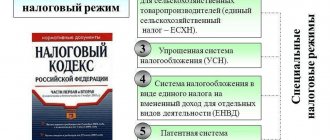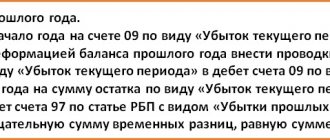Despite the fact that making a profit is not the priority of non-profit organizations (NPOs), they are also recognized as tax payers, albeit not the most important “fillers” of the budget. A number of taxes and fees are levied on NPOs, but the specific features of their activities are taken into account, which provide some tax benefits.
Let us consider issues related to the taxation procedure for NPOs according to the federal taxes and fees due to them.
Legislative regulation of NPOs as a subject of tax law
Even if profit is not the main goal of non-profit structures, its presence is possible in most cases. The main thing is that its receipt pursues the stated objectives of the organization, and is not used as a cover for the purpose of tax benefits. To control the use of NPO profits for their intended purpose, there are provisions of the Federal Law of January 12, 1996 No. 7-FZ (as amended on December 31, 2014) “On Non-Profit Organizations”.
The Tax Code of the Russian Federation recognizes the obligation of non-profit organizations to pay taxes on profits, since such organizations may have them (Article 246 of the Tax Code of the Russian Federation), and to provide declarations based on accounting according to general requirements.
Conclusion
NPOs pay VAT and income tax only on income from commercial activities. To distribute income, expenses and input tax, separate accounting should be organized. You need to report on these taxes even if there is no taxable base.
If the organization has full-time employees, then personal income tax and contributions must be paid on a general basis. Payments to volunteers are only subject to compensation for meals that exceed the norm.
When calculating property taxes, NPOs must use depreciation instead of depreciation.
Additional benefits for VAT, property tax and land tax are provided for public organizations of people with disabilities and religious NGOs.
Socially oriented, religious and pandemic-affected NPOs will have the majority of taxes and contributions written off for the 2nd quarter of 2020.
Type of NPO and taxation procedure
Non-profit organizations are usually divided into several types according to the source of funding:
- municipal (state) - they are financed by the state budget;
- public (non-state) - exist at the expense of their own profit and public contributions;
- autonomous - finance themselves.
IMPORTANT! The procedure and amount of taxes for non-profit organizations are directly related to whether the NPO conducts business activities.
As a rule, non-profit structures are not registered as entrepreneurs, but in the course of their operation they often have to provide services or perform work for the benefit of others in order to earn funds to finance the organization, thereby generating taxable profit.
General rules for taxation of NPOs
They are due to the characteristics of these structures, namely:
- profit is not their main goal;
- they are not entrepreneurs, and they need licenses to permit certain types of activities;
- NPOs can receive income in the form of voluntary contributions, donations and other gratuitous income.
These specific properties of NPOs are the basis for the general principles by which their taxation is carried out:
- All profits received by NPOs in the course of their activities are subject to appropriate tax (Article 246 of the Tax Code of the Russian Federation).
- Certain types of profit of NPOs are not included in the base for this tax (Article 251 of the Tax Code of the Russian Federation), namely, the profit that is received free of charge to ensure statutory activities. The list of non-taxable profits of non-profit organizations is contained in the orders of the Ministry of Finance of the Russian Federation.
Special rules for levying income tax
As noted above, not all profits of NPOs are eligible to be taxed. A legal reduction in the income tax base can only be applied if a number of conditions are met:
- Accounting for targeted and non-targeted income in NPOs should be kept separately; only then can targeted income be excluded from taxation on the basis of benefits for non-profit organizations. Naturally, these funds must be used exclusively for their intended purpose, which must be confirmed by a report.
- Non-targeted income must be taken into account among “other”; these are two types of income:
- sales - income from performing work, providing services (for example, selling company brochures, selling educational literature, organizing seminars, trainings, etc.);
- non-operating - those whose source does not have a direct connection with the activities of the NPO, for example, fines for non-payment of the membership fee, late fees, interest from a bank account, money for rented real estate - the property of an NPO member, etc.
Non-targeted revenues of NPOs (both groups of income), according to the Tax Code of the Russian Federation, constitute the income tax base.
REFERENCE! The income tax rate for NPOs is the same as for commercial structures: 24%, of which 6.5% will go to the federal budget, and 17.5% to the budget of the constituent entity of the Russian Federation to which the non-profit organization belongs. The last part can be reduced at the initiative of local authorities, into whose budget it is intended.
Specifics of VAT taxation of non-profit structures
If a non-profit organization provides any services or sells goods, it cannot avoid paying value added tax if the activity does not qualify for exemption from it. The list of preferential activities without VAT is presented in Chapter. 21 Tax Code of the Russian Federation. For example, it includes the following activities:
- looking after the elderly in nursing homes;
- work in social protection centers;
- activities with children in free clubs;
- medical services of private physicians;
- sale of goods made by disabled people (or organizations where at least half of them are disabled);
- charitable cultural events, etc.
Requirements for the types of activities of NPOs for VAT exemption:
- social significance as the main goal according to Ch. 25 of the Tax Code of the Russian Federation is the main condition;
- a license to engage in this type of activity;
- the service provided must meet certain requirements (most often these are the conditions of time and place).
In case of payment, VAT is calculated according to the same principles as for commercial organizations.
An autonomous institution has the right to use the simplified tax system.
Since the simplified tax system is a special tax regime, Ch. 26.2 of the Tax Code of the Russian Federation establishes a number of restrictions on its application, which are diverse in nature: both in terms of organizational and legal form, and in terms of type of activity, in terms of income and residual value of fixed assets, and in terms of the number of employees.
Representatives of autonomous institutions, as a rule, raise a question about the limitation established by paragraphs. 17 clause 3 art. 346.12 Tax Code of the Russian Federation. This provision states that state-owned and budgetary institutions do not have the right to apply the simplified system.
Let us remind you that according to paragraph 1 of Art. 2 of the Federal Law of November 3, 2006 No. 174-FZ “On Autonomous Institutions”, an autonomous institution is recognized as a non-profit organization created by the Russian Federation, a constituent entity of the Russian Federation or a municipal entity to perform work, provide services in order to exercise the powers of government bodies, the powers of bodies, as provided for by the legislation of the Russian Federation local government in the fields of science, education, health care, culture, the media, social protection, employment, physical culture and sports, as well as in other areas in cases established by federal laws. From which it follows that an autonomous institution of the usn is not a budgetary institution, therefore, the restrictions of paragraphs. 17 clause 3 art. 346.12 of the Tax Code of the Russian Federation in relation to budgetary institutions do not apply to autonomous institutions. This approach has been consistently followed by regulatory authorities for many years (letters of the Ministry of Finance of the Russian Federation dated July 28, 2008 No. 03-11-03/15, dated January 22, 2016 No. 03-11-06/2/2393). It also applies to cases where an autonomous tax service institution is created by changing the type of an existing budget institution.
At the same time, we note that the use of the simplified tax system is a voluntary choice of all business entities, including autonomous institutions (clause 1 of article 346.11 of the Tax Code of the Russian Federation). This means that an autonomous institution, while meeting the other requirements of Chapter. 26.2 of the Tax Code of the Russian Federation has the right to decide to switch to the simplified tax system from 2021 or to remain in the general taxation regime.
Other federal taxes for NPOs
In addition to the main fiscal contributions (income tax and VAT), non-profit organizations also pay other taxes and fees:
- State duty. If NPOs turn to government agencies to carry out legal actions, they pay a fee on the same basis as other individuals or legal entities. Certain NPOs and their types of activities may be exempt from state duty, namely:
- financed by the federal budget - logical, because the duty is sent there anyway;
- state and municipal repositories of cultural property (archives, museums, galleries, exhibition halls, libraries, etc.) - they may not pay state duty for the export of valuables;
- Non-profit organizations of disabled people – state fees in courts and notaries are abolished for them;
- special institutions for children with socially dangerous behavior - they are allowed not to pay a fee to collect parental debt;
- Customs duty. But this payment “does not look at individuals”, but exclusively at goods, therefore it is not exempted from it on the basis of the status of an NPO, but only if the goods are included in the corresponding list.
Regional taxation of NPOs
Local authorities establish the procedure for such taxation and rates, as well as benefits, including for non-profit organizations.
Property tax
Even if an organization has a benefit for this tax, it is still required to report to regulatory authorities in its tax return. The basis for accounting is the residual value of funds according to the data in the accounting records. The generally accepted rate of this tax is 2.2%, unless the regional authorities deem it necessary to reduce it, to which they have the right. Local structures also have the power to expand the list of non-profit organizations recognized as beneficiaries.
For different types of NPOs, the procedure for collecting property tax and benefits for it differs:
- Unconditional perpetual benefits for this tax on the basis of the law are provided for a number of non-profit organizations, such as:
- organizations of a religious nature and those serving them;
- scientific government agencies;
- criminal-executive departments;
- organizations that own cultural and historical monuments.
- Property tax benefits are provided to NPOs whose membership is made up of more than 50% (one type of benefit) or 80% disabled people.
- Autonomous NPOs, various foundations other than public ones, as well as non-profit partnerships do not receive property tax benefits.
Land tax
If NPOs have land plots in their ownership, perpetual use or inheritance, they are required to pay land tax. It is 1.5% of the cadastral value of the land plot. Some NPOs are completely exempt from this tax:
- societies of disabled people consisting of at least 80% (if the site is owned exclusively by them);
- penal system of the Ministry of Justice of the Russian Federation;
- religious structures.
FOR YOUR INFORMATION! Discounts on land tax for other types of non-profit organizations can be provided by local authorities.
Transport tax
If vehicles that belong to the organization on the right of ownership, management, or economic management are registered with an NPO, they are subject to transport tax on a general basis.
Residual value of fixed assets.
Another significant limitation for the use of simplified taxation system is the limitation on the residual value of fixed assets: it should not exceed 150 million rubles. (Clause 16, Clause 3, Article 346.12 of the Tax Code of the Russian Federation). For the purpose of applying this norm, fixed assets that are subject to depreciation and are recognized as depreciable property are taken into account in accordance with Chapter. 25 Tax Code of the Russian Federation.
Clause 1 of Art. 256 of the Tax Code of the Russian Federation establishes that depreciable property for the purposes of applying Ch. 25 of the Tax Code of the Russian Federation are property, results of intellectual activity and other objects of intellectual property that are owned by the taxpayer (unless otherwise provided by this chapter), are used by him to generate income and the cost of which is repaid by calculating depreciation. Depreciable property is property with a useful life of more than 12 months and an original cost of more than 100,000 rubles.
At the same time, expenses for the purposes of taxing the profits of organizations are economically justified and documented expenses, provided that they are incurred to carry out activities aimed at generating income (Article 252 of the Tax Code of the Russian Federation).
By virtue of the norm of paragraph 1 of Art. 257 of the Tax Code of the Russian Federation, the initial cost of a fixed asset is defined as the amount of expenses for its acquisition (and if the fixed asset was received by the taxpayer free of charge or identified as a result of an inventory, as the amount at which such property is valued in accordance with clauses 8 and 20 of Art. 250 of the Tax Code of the Russian Federation), construction, production, delivery and bringing it to a state in which it is suitable for use, with the exception of value added tax and excise taxes.
An autonomous institution, receiving property for operational management, does not incur actual costs for its acquisition. The property of an autonomous institution is assigned to it with the right of operational management on the basis of the Civil Code of the Russian Federation. The owner of the property of an autonomous institution is, respectively, the Russian Federation, a subject of the Russian Federation, or a municipal entity. An autonomous institution, without the consent of the founder, has no right to dispose of real estate and especially valuable movable property assigned to it by the founder or acquired by the autonomous institution at the expense of funds allocated to it by the founder for the acquisition of this property. The autonomous institution has the right to dispose of the remaining property, including real estate, independently (Article 3 of the Federal Law of November 3, 2006 No. 174-FZ “On Autonomous Institutions”).
At the same time, the value of such property for the purpose of calculating corporate income tax is not taken into account as part of taxable income on the basis of the norm of paragraphs. 8 clause 1 art. 251 Tax Code of the Russian Federation.
Thus, in tax accounting, the initial cost of depreciable property received by an autonomous institution for operational management is not formed due to the absence of expenses incurred by the taxpayer and, accordingly, is not subject to depreciation.
From the above rules it follows that the value of such property is not taken into account for the purpose of applying the restriction provided for in paragraphs. 16 clause 3 art. 346.12 Tax Code of the Russian Federation.
Accordingly, an autonomous institution, upon receipt from the owner for operational management for the implementation of statutory activities of real estate assets worth over 150 million rubles. if all other conditions provided for in Chapter. 26.2 of the Tax Code of the Russian Federation, has the right to apply a simplified taxation system on a general basis (letters of the Ministry of Finance of the Russian Federation dated January 22, 2016 No. 03-11-06/2/2393, dated July 6, 2016 No. 03-11-10/39450, dated March 21, 2019 No. 03 ‑11‑11/18650).
But when considering this limitation, it must be remembered that autonomous institutions have fixed assets acquired using funds from income-generating activities. This is the residual value of these fixed assets and is taken into account in connection with the limitation of 150 million rubles. for the purposes of applying the simplified tax system.
General mode or simplified tax system
NPOs have the right to choose whether to be on the general taxation system or switch to a “simplified” one. NPOs - payers of the simplified tax system are limited to a single tax, without paying:
- income tax;
- property tax;
- VAT.
As you know, for applying the simplified tax system there is an income limit of 45 million rubles. for the last 9 months of work. For non-profit organizations, this amount does not include receipts for targeted needs (grants, donations, subsidies, contributions from founders and members, etc.).
ATTENTION! The benefit on the tax rate on employee salaries for non-profit organizations when applying the simplified tax system is no longer valid.
General (OSNO) and simplified (USN) taxation systems for non-profit organizations
The general system is provided for all organizational and legal forms, including non-profit. The first place among NPO contributions to the budget is income tax. The rate is set at 20% of the taxable base. The non-profit association does not pursue the goal of making a profit, and the corresponding tax will be absent or equal to the minimum value.
If an NPO provides services on a paid basis, then the total amount of income from this activity does not exceed 2 million rubles. per quarter may qualify for VAT exemption. This provision is contained in Art. 145 of the Tax Code of the Russian Federation.
Practice shows that the use of a general taxation regime is unprofitable from an economic point of view. In this case, it is recommended to review the system and switch to the simplified tax system. Such a decision should be made jointly by the manager and the accountant; sometimes it makes sense to involve an outside specialist in the field of non-profit structures for consultation.
Non-profit organizations choosing taxation according to the simplified tax system can apply one of two schemes:
- Profit tax is calculated at a rate of 6% on income, which is all non-targeted income, that is, revenue.
- Profit is the difference between income and expenses. The resulting amount is multiplied by 15%. If there is no difference and there is no profit, in this case you will still have to pay tax in the amount of 1% of the amount of income.
Important! The tax rate in many constituent entities of the Russian Federation has been reduced in practice. For St. Petersburg simplified taxation system payers, for example, on the simplified taxation system, 15% of organizations actually pay a tax of 7%.
It’s easy to determine who benefits from the “simplified” tax regime and how much. For NPOs whose activities include performing work and providing services on a paid basis, or selling goods, the simplified tax system will be beneficial. Often the simplified tax system is chosen by autonomous non-profit organizations - autonomous non-profit organizations. Associations whose balance sheet assets include any property (real or movable) can switch to taxation under the simplified tax system; in this case, it is economically feasible to use a special regime. Non-profit organizations can use the simplified tax system if they meet the following criteria:
- The average number of employees does not exceed 100 people.
- The non-profit organization does not have branches.
- NPOs do not produce excisable goods.
- Fixed assets do not exceed RUB 150 million in residual value.
- The profit indicator for the period of 9 months is less than 112.5 million rubles.
If it intends to change the tax regime to the simplified tax system before December 31, the association notifies the tax office to which it is assigned. The transition to the “simplified” system will be carried out starting next year. Among other information, information is provided regarding the profit received for 9 months (until October 1) and the residual value of fixed assets. For a newly created non-profit association, it is possible to start using the simplified tax system within 30 calendar days from the date of registration and assignment to the Federal Tax Service.







